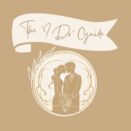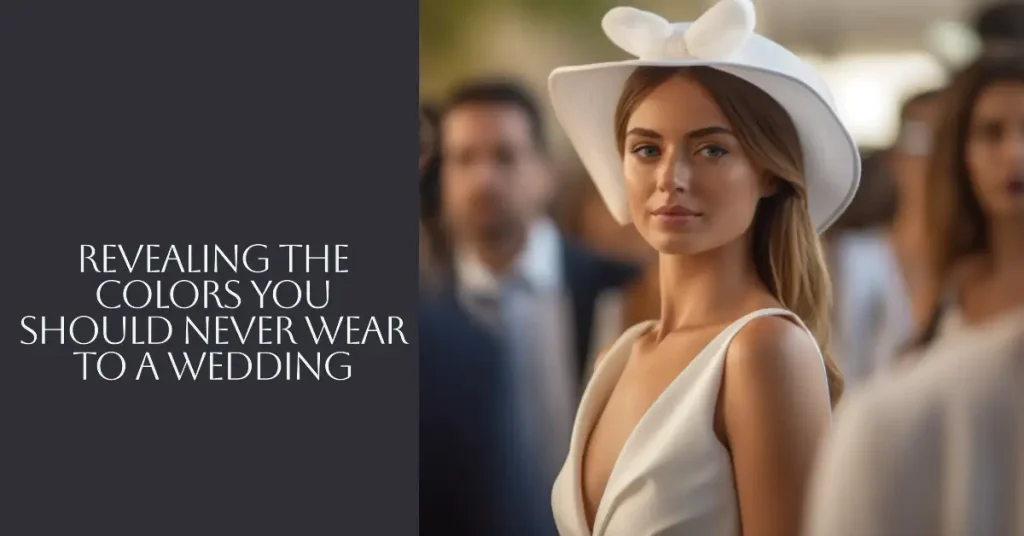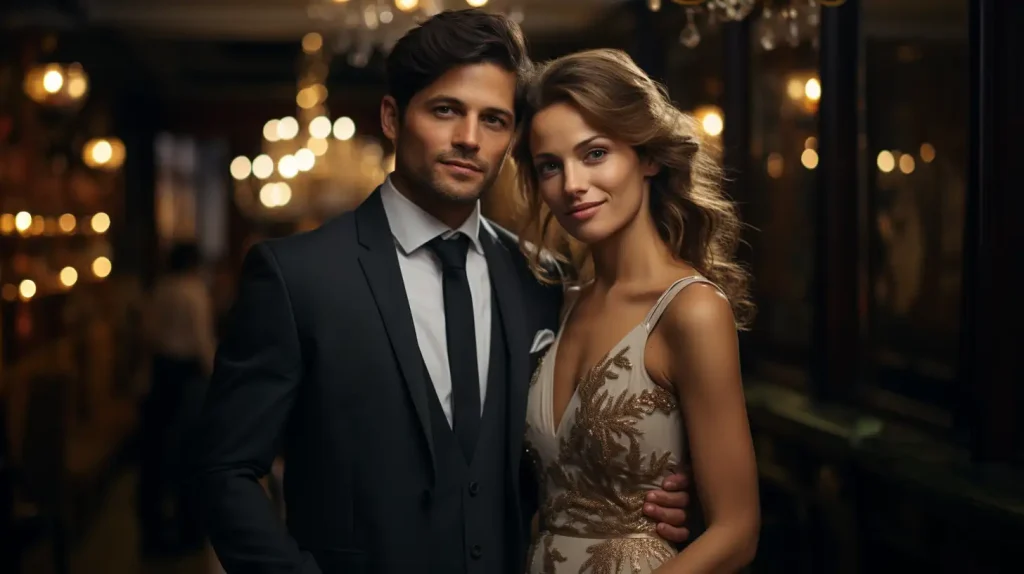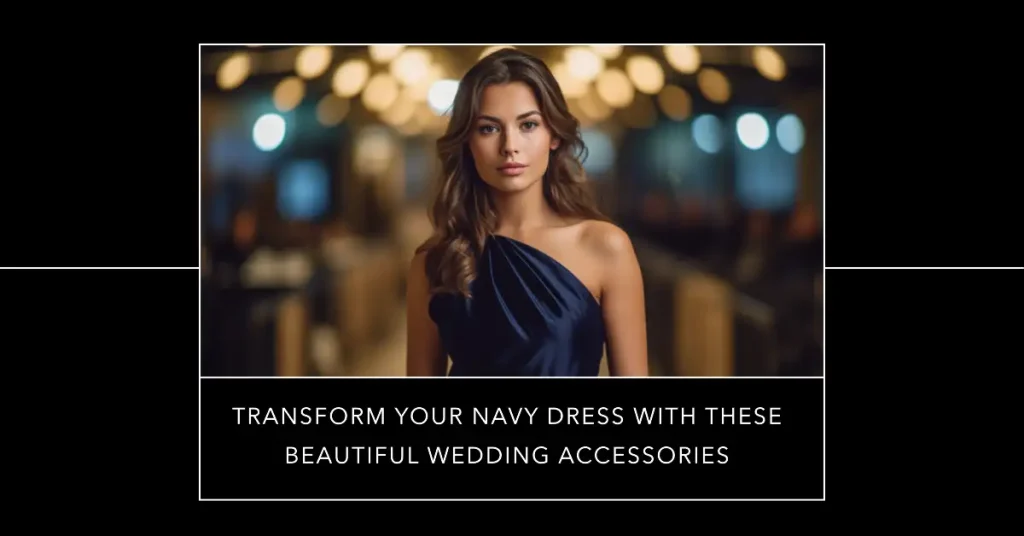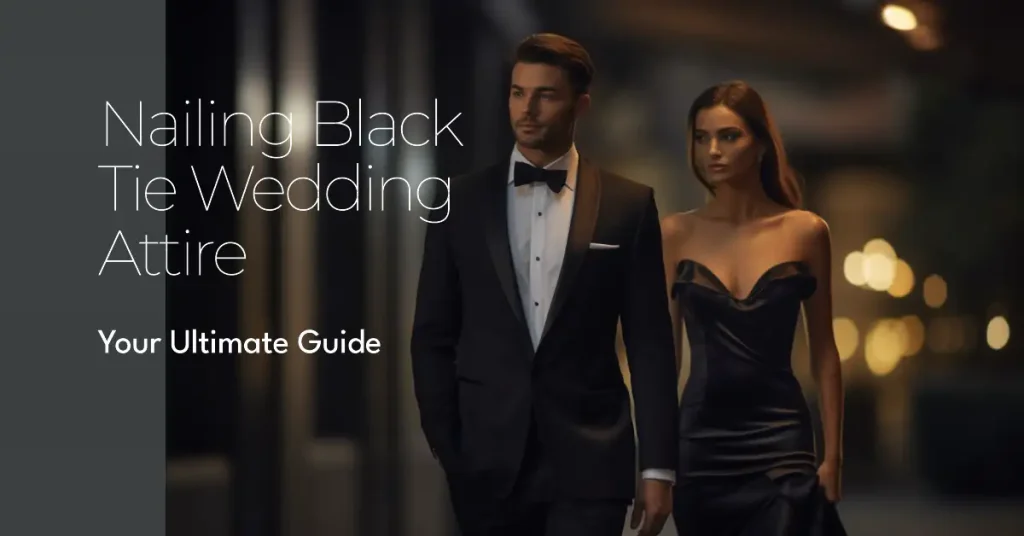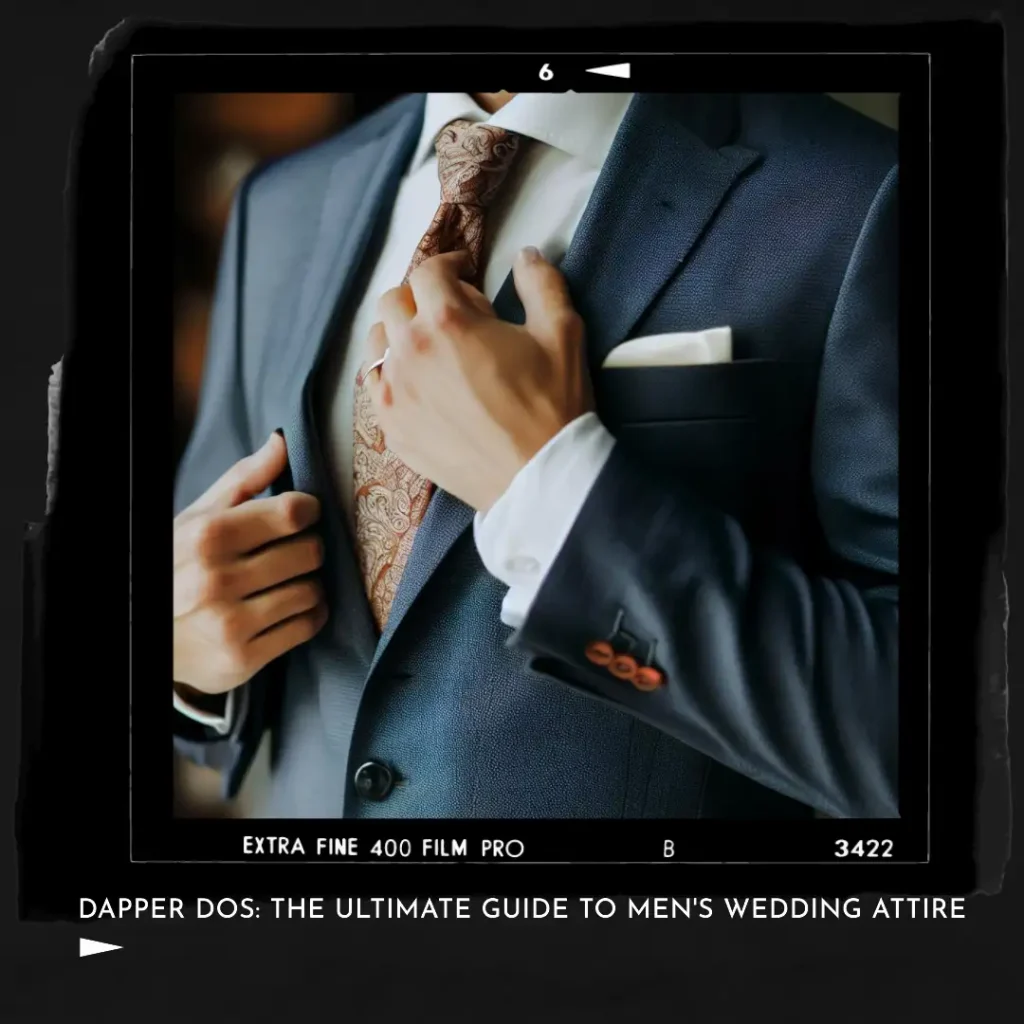Table of Contents
When attending a wedding, it is important to avoid wearing certain colors that might overshadow the bride or clash with the wedding theme. Stay away from white, as it is traditionally reserved for the bride, and also avoid wearing black, which is often associated with mourning.
Picture this. You’re rummaging through your closet, trying to find the perfect outfit for the upcoming wedding. You pull out dresses, scrutinizing colors, wondering if they will be suitable. Well, let’s journey together and uncover the rainbow of wedding etiquette.
Understanding Wedding Etiquette
Weddings, a celebration of love and unity, have been remarkable events since the dawn of time. Each carries its own set of traditions, customs, and norms that are as unique as the couple at the heart of it all. Let’s dive a little deeper into this fascinating world of wedding etiquette, especially as it pertains to your choice of attire.
- Carter, Lisa (Author)
- English (Publication Language)
- 107 Pages - 04/06/2024 (Publication Date) - Independently published (Publisher)
The Evolution of Wedding Attire
Historically, the concept of wedding attire has evolved significantly. In the past, brides often wore the best dress they owned, regardless of its color. The trend of wearing a white bridal gown only came into prominence after Queen Victoria chose white for her wedding dress in 1840. This history lesson serves as a reminder that traditions can and do change over time, but they are always rooted in respect for the couple and the sanctity of the occasion.
The Balance Between Style and Respect
When it comes to choosing your outfit, you must strike a balance between showcasing your personal style and adhering to the norms and traditions of the occasion. After all, a wedding is an event that revolves around the couple, and every guest’s attire should respect that fact.
Cultural Sensitivities and Norms
Understanding the cultural backdrop of the wedding is essential. In a traditional Indian wedding, for example, bright colors are the norm, and you might feel out of place in subdued hues. Conversely, at a traditional Japanese wedding, the color white is often significant and worn by the bride and groom, so you would want to avoid this color to respect their customs.
Respecting the Couple’s Wishes
Above all, wedding attire etiquette is about respecting the couple’s wishes. The couple may specify a dress code or theme on their invitation, and adhering to this shows respect for their planning and vision. Whether it’s a black-tie affair or a casual beach wedding, your attire should align with the tone they’ve set for their big day.
Colors Generally Considered Taboo
When attending a wedding, there are certain colors that have historically been considered off-limits or taboo. Let’s examine the traditional thinking behind avoiding white, black, and red.
The Bridal White
In many cultures, the bride traditionally wears white on her wedding day. This convention originated from the Western tradition, symbolizing purity and innocence. While this meaning has evolved over time, one aspect has remained consistent – it’s the bride’s moment to shine in white. Therefore, as a guest, wearing white is generally seen as a faux pas, potentially drawing attention away from the bride.
The Black Dilemma
Black is another color often debated in wedding etiquette. Traditionally associated with mourning and funerals, black could be considered inappropriate for a joyful event like a wedding. However, the tide has been turning on this taboo, with black being accepted in some contexts like formal or black-tie weddings. Even so, it’s best to consider the type and timing of the wedding, and when in doubt, check with the couple or opt for a different color.
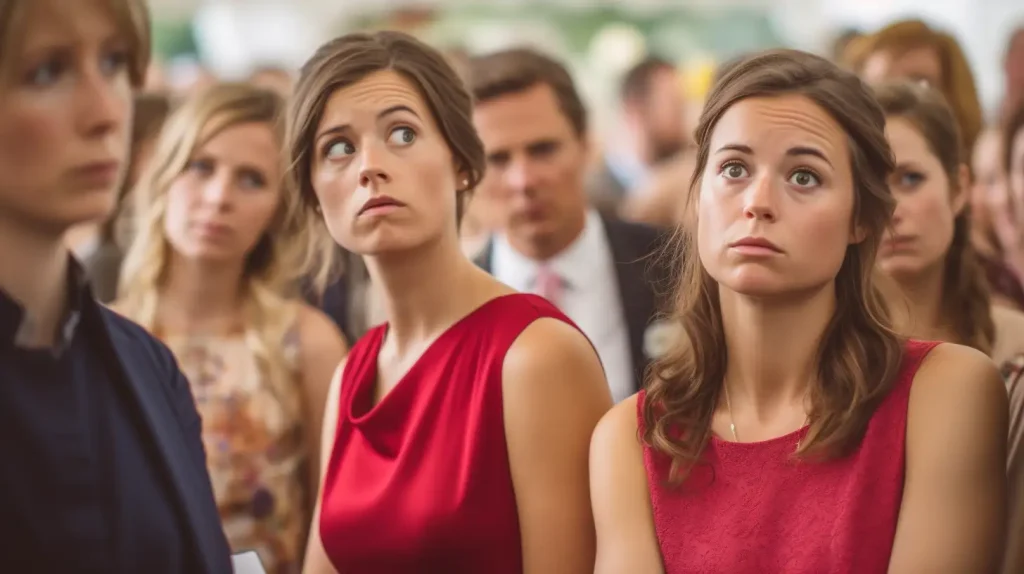
The Red Factor
Red is a vibrant and bold color. It naturally draws the eye and stands out in a crowd. In some cultures, such as Chinese and Indian, red is considered a color of luck and prosperity, and is therefore seen as appropriate and even desirable. However, in Western cultures, wearing red to a wedding can be seen as trying to upstage or draw attention away from the couple. As with black, the acceptability of red can depend on the specific cultural and situational context.
Breaking Down What Colors Not to Wear by Wedding Types
The type of wedding you’re attending plays a significant role in deciding what colors are appropriate for your attire. Let’s delve into the color etiquette for various types of weddings, from formal affairs to casual beach events, themed weddings, and those steeped in specific cultural traditions.
Formal or Black-Tie Weddings
Formal and black-tie weddings often call for more conservative, sophisticated color choices. Darker hues like navy blue, deep emerald, charcoal grey, or even black (provided it’s deemed acceptable by the couple), can be perfect for these occasions. The goal is to match the elegance and formality of the event without drawing undue attention to your attire.
Casual or Beach Weddings
At the other end of the spectrum, casual or beach weddings allow for a more relaxed approach to color. Lighter and more vibrant hues often fit perfectly with these fun, laid-back environments. Think soft pastels, bright blues, or even gentle tropical prints. The key here is to harmonize with the relaxed and sunny ambiance.
Themed Weddings
Themed weddings can be a fun opportunity to play with color. The couple may have a specific color scheme in mind to align with their theme, and this will usually be indicated on the invitation. From a 1920s Gatsby-inspired celebration that calls for glitz and gold to a rustic barn wedding where earthy tones might be preferred, it’s important to respect the couple’s vision for their day.
Cultural Weddings
When attending a wedding rooted in a specific culture, understanding and respecting the associated color symbolism is essential. For instance, in Chinese weddings, red is considered auspicious, while white can be associated with funerals. Conversely, Western weddings traditionally have the bride in white. Do a little research or ask the couple if you’re unsure about the appropriate color choices.
When Breaking the Rules Could be Appropriate
While adhering to traditional color etiquette for weddings is generally advised, there are certainly instances when it’s perfectly fine, even encouraged, to buck the trend. Let’s explore those rule-breaking moments and how to navigate them with confidence and style.
Color-Themed Weddings
Sometimes, a couple might decide to incorporate a color theme into their wedding and request guests to dress accordingly. If the invitation asks for a white or black-themed outfit, don’t be afraid to honor this request despite traditional etiquette. This is a clear case of the couple’s wishes overriding the standard rules.
Vibrant Color Schemes
Some couples love the idea of a vibrant, colorful wedding and may incorporate traditionally taboo colors into their scheme. If their wedding palette includes bright reds, deep blacks, or even crisp whites, you can consider it a green light to include these colors in your outfit. Remember, it’s about blending with the overall theme and not overshadowing the couple.
Innovative Couples
In today’s age, more and more couples are moving away from rigid conventions and encouraging their guests to express their individuality. In such situations, you may find yourself free to choose colors that traditionally might have been frowned upon. It’s all about the spirit of the celebration, and if the couple’s approach is innovative and unconventional, your choice of attire can reflect that.
Understanding the Wedding’s Color Palette
The color palette of a wedding is a well-thought-out element, reflecting the couple’s personality and the vibe they want for their special day. As a guest, you can align your attire to harmonize with this palette, contributing to the visual aesthetic of the celebration. Let’s delve into how you can do this effectively.
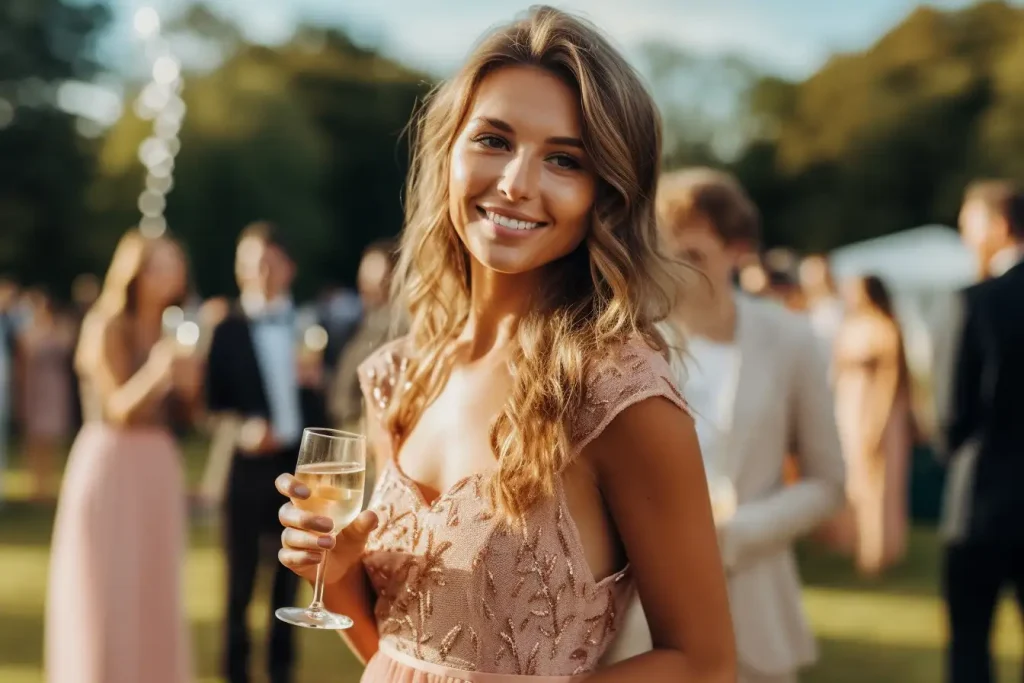
Looking for Color Clues
Your first clue about the wedding color palette might come from the invitation. Pay close attention to the colors used in the invitation design, as this often provides hints about the wedding’s overall color scheme. You can use these colors as a guide when selecting your outfit.
Venue Decor
If you can’t glean any information from the invitation, consider the venue decor. Outdoor weddings in a garden or beach might call for lighter, more vibrant colors. On the other hand, a wedding in a grand ballroom might lean towards more formal, darker hues. Remember, the idea is not to match the decor but to select a color that won’t clash with the setting.
Harmony Over Competition
Your goal should be to complement the wedding’s color palette, not compete with it. When deciding what colors not to wear to a wedding, avoid those that are so similar to the palette that you blend in completely, but also steer clear of colors that will clash. The key is to achieve a balance that allows you to look like a part of the celebration without diverting attention away from the couple.
Navigating Seasonal Color Choices
Seasons, with their unique moods and colors, significantly influence wedding themes and attire choices. Each season has its own color palette that you can mirror in your outfit selection. Let’s discuss how to navigate these seasonal color choices for your best wedding attire.
Spring Celebrations
Spring, a season of renewal and blossoming beauty, lends itself well to lighter, more delicate colors. Consider wearing pastel shades like blush pink, mint green, baby blue, or lavender. These colors will not only make you feel in sync with the season but will also add a refreshing touch to your overall look.
Sunny Summer Weddings
For summer weddings, you might want to lean towards bright, vibrant colors that reflect the warmth and vivacity of the season. Think about tropical colors, such as turquoise, coral, sunny yellow, or even a bold sea-blue. Remember to keep the fabric light and breezy to remain comfortable in the summer heat.
Autumnal Elegance
As autumn rolls in, bringing with it a spectacular display of changing leaves and a cooler climate, your attire can reflect this transition. Go for earthy tones like burnt orange, rich red, mustard yellow, or even a deep forest green. These colors will complement the season beautifully.
Winter Wonder
Winter weddings often call for richer, deeper hues to reflect the season’s elegance. Consider jewel tones like burgundy, emerald green, deep plum, or navy blue. These colors will add a touch of sophistication to your look while keeping in harmony with the winter season.
The Role of Patterns and Prints when Considering What Colors not to Wear to a Wedding
Patterns and prints can add a unique flair to your wedding attire, but their application requires thoughtful consideration to avoid overshadowing the celebratory couple. From delicate floral prints to subtle geometric patterns, let’s explore how you can incorporate these stylish elements into your wedding outfit while maintaining balance.
Floral Prints
Floral prints, especially for spring or summer weddings, can be a charming choice. They infuse your outfit with a sense of freshness and elegance. Choose prints that mirror the colors of the season, but remember to keep it subtle. A floral dress in a light color palette can make you look stylish without drawing attention away from the couple.
Geometric Patterns
Geometric patterns can be a chic choice, particularly for modern or city weddings. These patterns add a touch of sophistication and can make your attire more interesting. However, it’s crucial to keep the patterns subtle and the colors within the wedding’s overall palette to maintain a harmonious look.
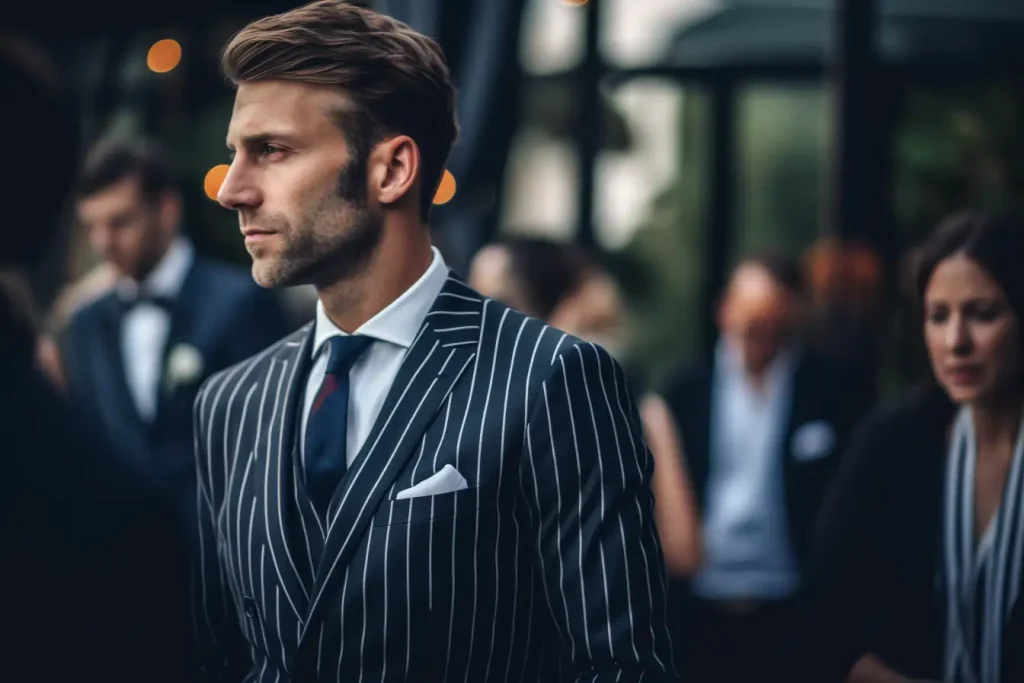
Stripes and Polka Dots
Stripes and polka dots are other options to consider. A subtly striped suit or a polka-dotted dress can make a statement without being too flashy. Again, the key is to ensure the pattern isn’t too bold or loud, potentially taking the focus away from the wedding party.
Considerations for Accessory Colors
Accessories play a vital role in pulling your wedding attire together. They can either make or break your overall look. The colors of your shoes, bag, jewelry, tie, or even cufflinks should enhance your outfit, not steal the show. Here’s how to ensure your accessories remain on point and in harmony with your ensemble.
Footwear
The color of your shoes should complement your outfit. Stick to neutral shades like black, nude, or brown for a safe bet. However, if you’re feeling a bit adventurous and the occasion permits, consider matching your shoe color to a subtle shade in your outfit.
Bags and Clutches
Bags or clutches are more than just functional – they’re part of your attire. Choose a color that blends well with your outfit and doesn’t distract. A metallic clutch – gold, silver, or bronze – usually works well with most colors. For a more casual wedding, a bag that complements your shoes can tie your look together.
Jewelry
Jewelry can add a touch of elegance to your look but be mindful not to let it overshadow the couple. Classic metals like gold, silver, or rose gold are typically safe choices. If you’re wearing colored gemstones, make sure they’re in harmony with your outfit’s color.
Ties and Cufflinks
For men, ties and cufflinks are integral accessories. They should complement the suit without being too flashy. A tie in a darker or lighter shade of the suit color can look very stylish. Similarly, classic silver or gold cufflinks will add a subtle touch of sophistication.
How to Make a Safe Color Choice
Choosing the right color for a wedding can sometimes feel overwhelming. If you find yourself wavering amidst a sea of color choices, fear not. There are universally accepted colors that are both stylish and versatile. Let’s explore these safe choices and how you can use them to your advantage.
Navy
Navy is a classic color that works for any season and any style of wedding. It’s deep enough to be formal, yet vibrant enough to stand out. Navy is a fantastic backdrop to showcase your accessories, whether you want to add a pop of color or stick to classic silver or gold.
Grey
Grey, in its various shades, is another safe color choice. From light grey for summer weddings to charcoal for winter nuptials, this color is versatile and sophisticated. Pair it with contrasting or complementary colors for your accessories to add a personal touch.
Pastel Shades
Pastel shades such as blush, mint, lavender, or light blue, are perfect for spring and summer weddings. They’re light, romantic, and blend well with the season’s colors. Pastels offer a softer look and allow you to play with bolder accessories without the risk of clashing.
Universal Rule
When in doubt, remember that the color of your outfit should never outshine the bride or groom. Go for colors that are pleasing to the eye and blend well with the overall color scheme of the wedding. Your choice should reflect respect for the couple’s theme while allowing your personal style to shine through.
The Final Touch
Perhaps the most important aspect of your attire is not the color or the style, but how you carry it. Confidence is the best outfit you can wear. When you feel good in what you’re wearing, it shows. You exude a glow that can’t be replicated by any color.
Conclusion: What Colors Not to Wear to a Wedding
And there you have it, your colorful guide to wedding attire etiquette. Above all, remember that your presence is the greatest gift to the couple. So dress with confidence and show up with a heart full of celebration. No color can outshine the joy and love that you bring to their special day.
FAQs
Q: What if I’m unsure about the dress code or colors to avoid?
A: If you’re unsure about the dress code or specific colors to avoid, it’s best to reach out to the couple or the wedding planner for guidance. They will appreciate your effort to dress appropriately and will be able to provide you with any necessary information or suggestions.
Q: Can I wear a completely black outfit if it’s a formal wedding?
A: While black is generally associated with more formal events, it’s still advisable to avoid wearing a completely black outfit to a wedding. Black can convey a somber tone and may be seen as inappropriate for a joyous celebration like a wedding. Go for a combination of colors or add some colorful accessories to your black attire to strike a balance.
Q: Are there any guidelines for wearing bright or neon colors?
A: Bright or neon colors can be fun and vibrant, but it’s important to exercise caution when wearing them to a wedding. These colors can attract a lot of attention and may overshadow the bride or clash with the wedding’s overall aesthetic. It’s best to choose more subdued or pastel shades instead to maintain an appropriate balance.
Q: Can I wear all white if the wedding has a non-traditional theme?
A: Even if the wedding has a non-traditional theme, it’s still best to avoid wearing all white. White is conventionally reserved for the bride and wearing it may still be seen as trying to steal attention or upstage her. Instead, embrace the non-traditional theme by incorporating it into your outfit through accessories, patterns, or alternative color choices.
Q: Are there any specific colors to avoid for evening weddings?
A: While there are no hard and fast rules for colors to avoid specifically for evening weddings, it’s generally advisable to steer clear of extremely bright or flashy colors that may appear too loud or overwhelming in low-light settings. Opt for richer, darker shades or elegant neutrals that complement the sophisticated ambiance of an evening event.
Q: Can I wear a color that matches the wedding party?
A: It’s generally considered courteous not to wear a color that matches the wedding party, especially if they have specific attire or color scheme assigned to them. You don’t want to be mistaken for a member of the wedding party or overshadow them in photographs. Instead, choose a different color that complements or coordinates well with their attire.
Q: Can I wear all black and white if it’s a black and white-themed wedding?
A: While a black and white-themed wedding may seem like an opportunity to wear an all-black and white outfit, it’s still recommended to add some color to your attire. Wearing all black and white can come across as too monotone and may appear dull or unexciting. Incorporate a pop of color through accessories, shoes, or a statement piece to add visual interest to your outfit.
Q: Is it acceptable to wear denim to a casual outdoor wedding?
A: While denim can be a comfortable and casual choice for outdoor events, it’s best to avoid wearing it to a wedding, even if it is labeled as casual. Go for more polished and sophisticated fabrics like cotton, linen, or lightweight materials that are more suitable for a celebratory occasion like a wedding.
Key Takeaways
- Traditional colors to avoid: White should be avoided as it is traditionally reserved for the bride, and black is often associated with mourning.
- Cultural considerations: Understand the cultural background of the wedding and respect the color symbolism associated with it. Different cultures may have specific colors that are considered appropriate or taboo.
- Respecting the couple’s wishes: Adhere to any dress code or theme specified by the couple on their invitation. This shows respect for their planning and vision for their big day.
- Colors for different types of weddings: Formal or black-tie weddings call for more conservative colors like navy blue, deep emerald, or charcoal grey. Casual or beach weddings allow for lighter and more vibrant hues. Themed weddings may have specific color schemes indicated on the invitation. Cultural weddings require understanding and respecting color symbolism.
- Breaking the rules: In some cases, it may be appropriate to break traditional color etiquette. If the couple requests a specific color theme, it’s acceptable to honor their request. Vibrant color schemes or innovative couples may also encourage more unconventional color choices.
- Seasonal color choices: Different seasons suggest different color palettes. Spring weddings can incorporate pastel shades, while summer weddings can feature bright and vibrant colors. Autumn calls for earthy tones, and winter weddings often involve richer and deeper hues.
- Considerations for patterns and prints: Floral prints, geometric patterns, stripes, and polka dots can be incorporated into wedding attire, but they should be kept subtle and in harmony with the overall color scheme.
- Accessory colors: Accessories should enhance your outfit without stealing the show. Choose shoes, bags, jewelry, ties, and cufflinks that complement your attire and the wedding’s overall aesthetic.
- Safe color choices: When in doubt, safe color choices include navy, grey in various shades, and pastel shades. These colors are versatile and can be suitable for different seasons and wedding styles.
- Confidence is key: Regardless of the color or style, confidence is the most important aspect of your attire. Feeling good in what you’re wearing and carrying yourself with confidence will make you shine at the wedding.
COPYRIGHT NOTICE
Please be advised that all images, designs, and creative content on this page are the exclusive property of TheIDoGuide.com and are protected under international copyright laws. The images may not be reproduced, copied, transmitted or manipulated without the written permission of TheIDoGuide.com.
Unauthorized use, distribution, display, or creation of derivative works of any images contained on this site, is strictly prohibited and can lead to legal penalties. We actively monitor for, and enforce, our copyright interests.
If you wish to use any of our images, kindly contact us to seek permission. Respect of copyright is not merely a legal requirement but also an acknowledgement and support of the hard work and creativity that goes into producing them.
Thank you for your understanding and cooperation.
© 2023, TheIDoGuide.com. All Rights Reserved.
